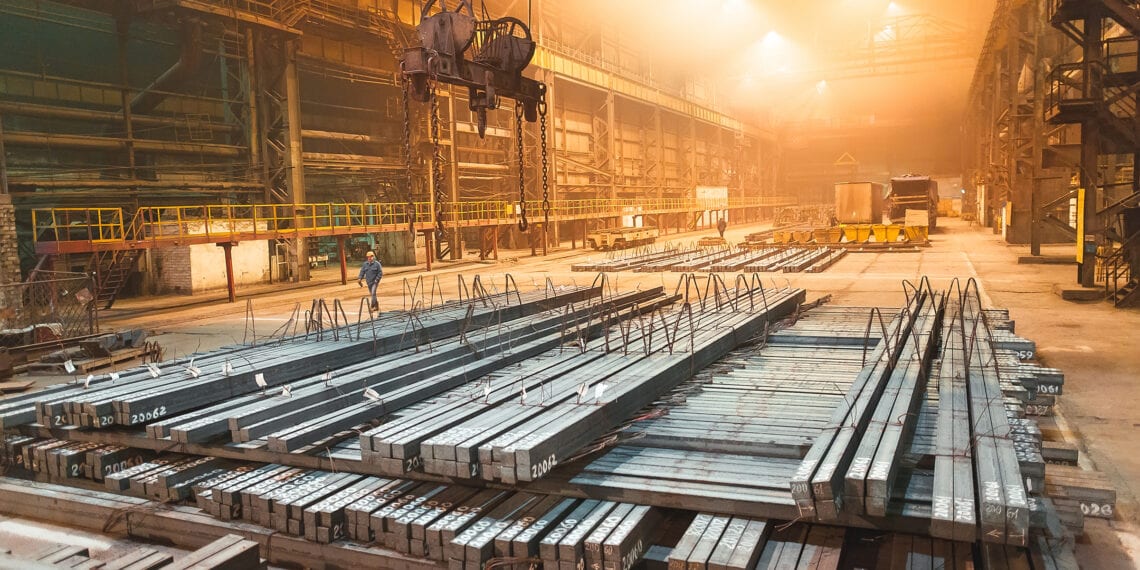A Swedish consortium is leading the charge to produce the first fossil-free sponge iron, from feedstock to steel. The entity, called HYBRIT Development AB, is a joint venture between SSAB – a steelmaker headquartered in the country, LKAB – a Swedish mining company, and Vattenfall AB – one of Europe’s leading energy companies. Production at HYBRIT’s Gällivare plant is slated to begin by 2026.
The plant, which is located in the north of the country, will have an initial capacity of 1.3M tonnes before reaching industrial-scale sponge iron production of 2.7Mt by 2030. Last September, HYBRIT announced its intention to eliminate carbon dioxide from steelmaking by using hydrogen in the direct reduction of iron ore. The hydrogen itself will be produced by electrolyzing water using fossil-free power at its hydrogen pilot plant.
The news comes as many companies within the steel industry are coming under increasing pressure to find greener methods of production, an aim which aligns with global targets set out in the Paris Agreement on climate change.
Northern hub
While HYBRIT is a leading light it the push to decarbonize the steel industry, it isn’t the only one in Europe. Nor, in fact, is it the only such initiative in Sweden. H2 Green Steel is also on a mission to clean up the industry by producing “green steel in collaboration with customers across multiple segments, including automotive, commercial vehicle, white goods, furniture, and industrial equipment”, according to the company’s website.
Like its counterpart HYBRIT, H2 Green Steel’s plant is situated in the north of Sweden, at Luleå in Norbotten County, which the company touts as a “region of innovation and growth”. For HYBRIT, the Gällivare site, which is also in Norbotten County, though further inland, was selected because of its proximity to iron ore, logistics, electricity supply, and energy optimization.
Driving an emission-free value chain
One of H2 Green Steel’s key strength’s is its partnerships with other Swedish sectors heavily reliant on steel. One such example is Scania, a dominant player in the transport industry, which has invested in H2 Green Steel. According to the company, each Scania truck currently contains five tonnes of steel, so entering into such a partnership is a positive step towards ensuring its products eventually become emission-free. Carl-Erik Lagercrantz, chairman of the board of H2 Green Steel, explains more: “One of the important success factors for H2 Green Steel is to bring in heavy industrial players from the start, with whom we can do early joint product development. We now get this through Scania, which is a company with a clear ambition for the sustainability work in all parts of its operations.”
In fact, so close is this partnership between the two companies that H2 Green Steel’s CEO, Henrik Henriksson, is the former CEO of Scania, where he served for 23 years in a number of positions.
An international movement
Further afield in Europe, German steel company Salzgitter AG, recently announced the commissioning of the WindH2 project in partnership with its subsidiary Avacon and gas and engineering company Linde. Wind will be harnessed to create hydrogen for low C02 steel production, with the ultimate aim of replacing current blast furnaces with a combination of direct reduction plants and electric arc furnaces. According to the company, such a transformation of steel production could reduce C02 emissions by around 95% by 2050.
The vision of replacing coal-fired blast furnaces is shared by Fortescue’s chairman Andrew Forrest, who believes they will be extinct by 2050. “I don’t think there will be a coal-fired blast furnace in operation by 2050,” he told a 15 March media call after the Australian metals giant fast-tracked its carbon neutrality target from 2040 to 2030.
In January this year, Mr Forrest said that Australia needed to develop its own big steel-making industry using the nation’s vast iron ore resources and green technologies, such as renewable energy and hydrogen, reported the Australian Financial Review.
The company will start building a green steel pilot plant in Western Australia this year.












